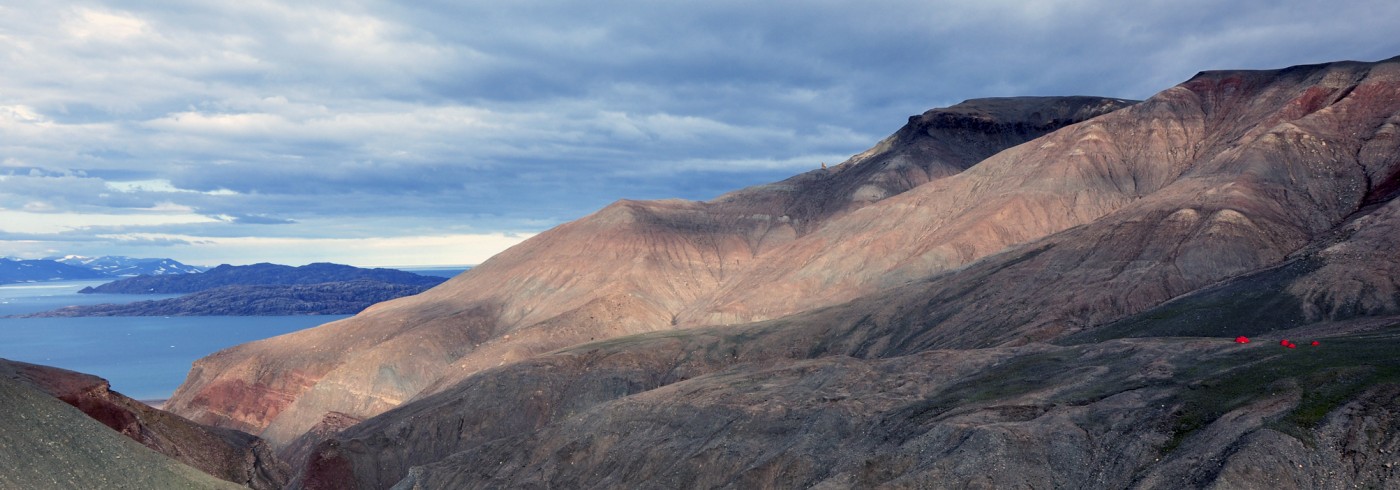The weather has cleared but it is still chilly. Yesterday was certainly not wasted. We climbed up the nearest peak and circled round the valley. It is fairly clear that the upper part of the succession is not exclusively marine but rather comprises a complex sequence of shallow near-shore to lagoonal-deltaic and fluvial rocks. You can imagine, therefore, that 250 million years ago Kap Stosch was a coastal environment that became shallower over time. In-flowing rivers deposited large amounts of sandy sediment, but otherwise the water would have been calm with fine mud supporting a fauna of small “clam-like” bivalves. We found two species as fossils – Myalina kochi and Anodontophora fassaensis – these are important age correlates for the youngest part of the Kap Stosch Triassic sequence.
Today we turned our attention to the older marine sections and decided to work up the nearest valley – Blockeln.
Looks like it will be Round 1 to this site.
We climbed down and crossed the Blue River before skirting the 45° slope on the other side. The ground was still muddy but the rocky scree made for reasonable footholds. We then climbed about 200 m up across the slope looking for any outcrops of marine shale, which is our prime target for aquatic reptiles. Grzegorz found an impression of an ammonite – squid-like animals that had a characteristically coiled shell – indicating that we were indeed within the Triassic marine succession. However, there was mud everywhere, and no further fossils were collected as we climbed higher towards the vertical cliff of basalt that caps all of the sedimentary rocks in the area.
Climbing over the basalt (VERY carefully) we finally got a great view out over the valley. Disappointingly there were mudslides covering many exposures and the screes of loose rocks meant that we would have to consider what sites could be safely accessed and what objectives we might hope to achieve.
Our luck changed entirely on the way down though. We walked over the top of the plateau and down into the Blue River bed again on our way back to camp. Almost simultaneously both Ben and Grzegorz found two fish fossils preserved within limestone concretions that we had expected to find in Blockeln. One was a small actinopterygian, possibly Boreosomus – something like the Triassic equivalent of a Herring. The other was a curious deep-bodied fish named Bobastrania groenlandica, which is a key marker fossil for the earliest Triassic, and showed without doubt that we were in the right place for our long hoped for early ichthyosaur.
Further searching also located the source of the fish concretions – a steep slope on the eastern side of the Blue River.
This offers our first big chance for new discoveries, and hopefully will yield at least some trace of our mysterious ancient marine reptiles.

